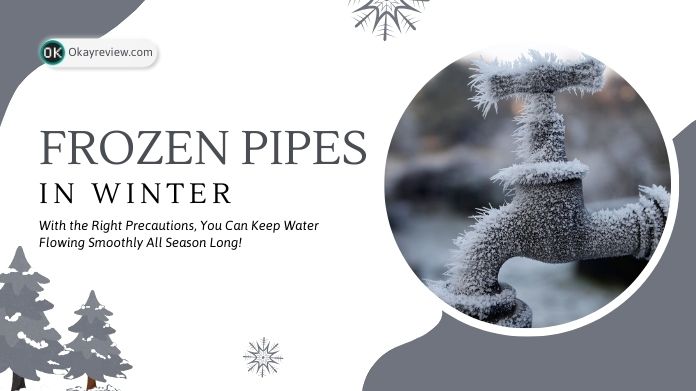If you’ve ever experienced frozen pipes during winter, you know how stressful it can become. When the water in a pipe freezes, the expansion tends to create so much pressure on the pipe that it bursts.
Result? Nothing short of an inconvenience; it could mean thousands of dollars worth of damage from water, repairs, and cleanups.
Picture waking up on a freezing morning, turning on the faucet, and realizing nothing comes out. Or worse, the basement is throwing up all over your carpet because a pipe gave way overnight.
The best part? Preventing frozen pipes is much easier (and cheaper) than repairing them later. A few easy precautions can protect your home, save you money, and give you peace of mind all winter long.
Now, let us consider some very specific measures that have worked to keep any frozen pipes safe during those low temperatures.
Table of Contents
7 Proven Ways to Prevent Frozen Pipes This Winter
1. Disconnect and Drain Outdoor Water Sources to Avoid Frozen Pipes
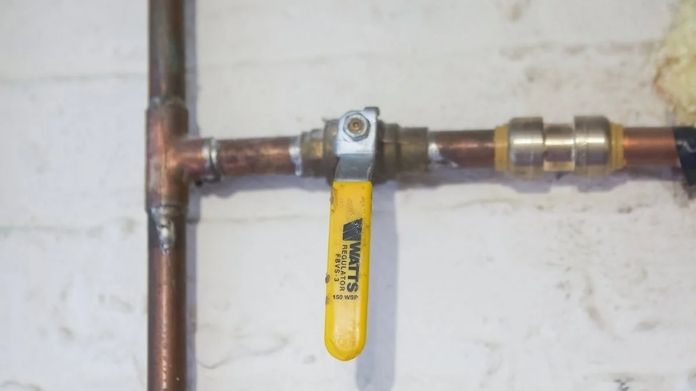 Clinging to garden hoses may appear harmless; however, leaving them connected during freezing weather is undoubtedly an invitation to trouble. Water trapped inside them can freeze, expand, and back up into your indoor pipes.
Clinging to garden hoses may appear harmless; however, leaving them connected during freezing weather is undoubtedly an invitation to trouble. Water trapped inside them can freeze, expand, and back up into your indoor pipes.
Here’s what you should do:
- Remove and store your hoses before the first freeze.
- Shut off outdoor faucets and drain any remaining water.
- If you have sprinkler systems, flush and drain them as well.
- Optional, but for added protection, use cheap faucet covers that insulate outdoor spigots.
2. Insulate Exposed Pipes to Prevent Frozen Pipes
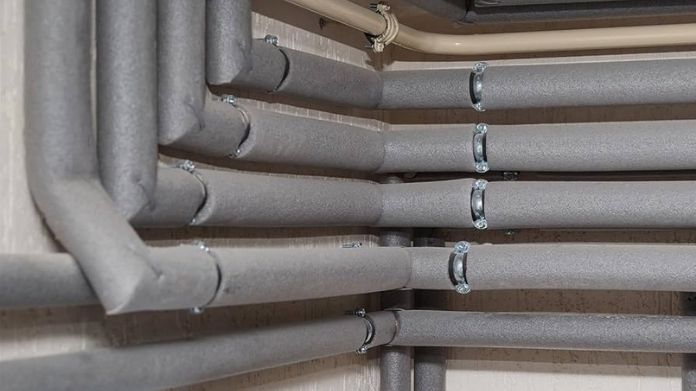 Do you have pipes in your crawl spaces, basement, attic, or garage? These are not as warm and are the most exposed to cold in winter. Putting foam insulation sleeves on those pipes is like dressing them up in a warm winter coat.
Do you have pipes in your crawl spaces, basement, attic, or garage? These are not as warm and are the most exposed to cold in winter. Putting foam insulation sleeves on those pipes is like dressing them up in a warm winter coat.
If temperatures in your area of residence typically fall below freezing, you might want to include heat tape or thermostat-equipped heating cables. They give off soothing, steady heat and are particularly useful for recalcitrant trouble areas.
3. Seal Drafts and Air Leaks That Can Cause Frozen Pipes
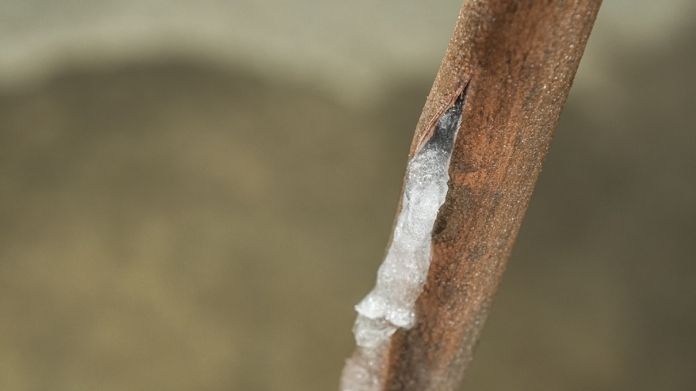 Smallest cracks in your foundation and walls can allow cold air to seep in and attack nearby pipes. Take a few minutes to examine around windows and doors as well as wherever pipes enter your home. Caulk or spray foam those leaks shut.
Smallest cracks in your foundation and walls can allow cold air to seep in and attack nearby pipes. Take a few minutes to examine around windows and doors as well as wherever pipes enter your home. Caulk or spray foam those leaks shut.
A special focus should also be directed toward the garage; if water lines run through there, keeping the garage door closed while the temperature is at its nadir can do wonders.
4. Keep Indoor Air Circulating to Protect Against Frozen Pipes
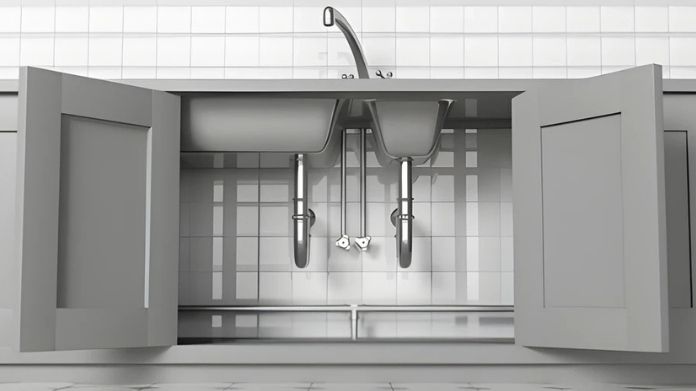 Here is a neat little trick that most people tend to forget: Open the cabinet doors beneath your sinks in your kitchen and bathroom.
Here is a neat little trick that most people tend to forget: Open the cabinet doors beneath your sinks in your kitchen and bathroom.
This allows air to circulate amongst the exposed pipes under your sinks, which should prevent them from freezing.
Keep some doors open on the interior, further permitting air to equalize and flow throughout your home; a great consideration is warmth, like an invisible blanket that cloaks the vulnerable places.
5. Let Faucets Drip to Reduce the Risk of Frozen Pipes
 Dripping taps, think of them as a mini insurance policy. A constant trickle during severe cold will keep water from freezing; together with relieving pressure on the lines, should any ice formation occur, it becomes less likely to burst.
Dripping taps, think of them as a mini insurance policy. A constant trickle during severe cold will keep water from freezing; together with relieving pressure on the lines, should any ice formation occur, it becomes less likely to burst.
This is the last trick to bung on the breakfast table on the coldest nights or when hours below freezing are being predicted.
6. Maintain a Consistent Indoor Temperature to Stop Frozen Pipes
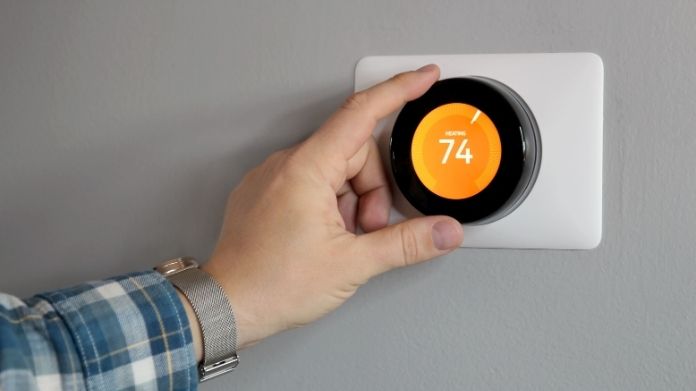 Turning the thermostat way down at night or before future travel will save the homeowner a few bucks on a heating bill, as a general rule.
Turning the thermostat way down at night or before future travel will save the homeowner a few bucks on a heating bill, as a general rule.
But doing so exposes pipes to freezing temperatures. Do not let your house drop below about 55°F (13°C) with your thermostat on temperature control.
If you’re traveling, ask a friend or neighbor to check on your house, or use a smart thermostat that allows you to monitor and adjust the temperature remotely.
7. Protect Outdoor Meters and Equipment from Frozen Pipes
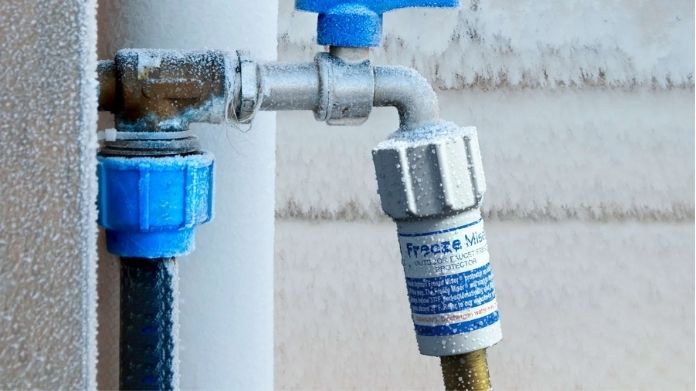 Water meters are just as vulnerable as pipes. Ensure that the meter covers fit tightly and have no cracks.
Water meters are just as vulnerable as pipes. Ensure that the meter covers fit tightly and have no cracks.
Insulation wraps are also required, and in the case of very cold weather, safe heating sources such as a small bulb or heating pad should be placed inside for protection against freezing.
One word of caution: never use open flames or unsafe heating devices near your plumbing or meters the risks outweigh the benefits.
Our Thoughts
Frozen pipes are one of those problems that have a way of transforming an otherwise cozy winter day into a nightmare.
But in actual fact, not much would be needed to stop them. By disconnecting hoses, adding insulation, sealing drafts, and keeping your home warm, you’re saving yourself from a major (and costly) disaster.
A little preparation now can spare you the stress of waking up to no running water or dealing with water damage in the dead of winter. Before the next big freeze, do this for the sake of your future self; trust us, he will be grateful.

